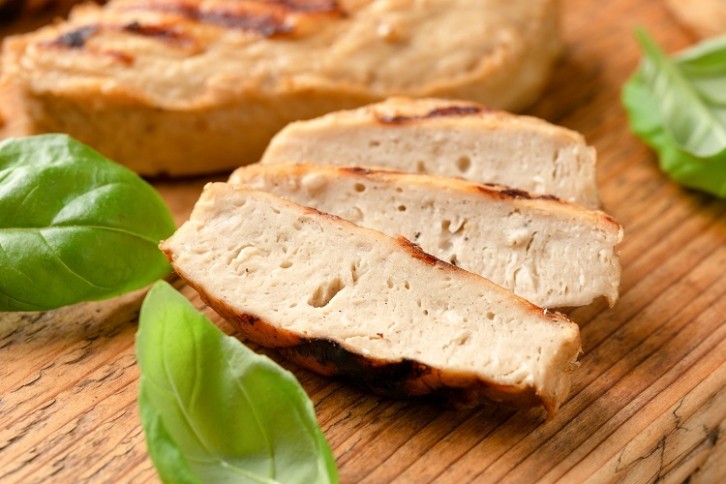GUEST ARTICLE
The next-step in plant-based? Understanding the extruder

After some years of rapid growth, the market for plant-based meat substitutes has recently plateaued recently.
Consumers are still keen on plant-based options, but they want more from them. Taste is king, of course, but texture is important too – and, of course, the price must be right. Could a better understanding of the extrusion process deliver on all three factors?
Steven Cornet, expert in protein structuring at NIZO Food Research, thinks so.
René Floris: How do plant-based products move forward from where they are today?
Steven Cornet: Plant-based meat substitutes have developed hugely over the years. Today’s products have a much better flavour and a more satisfying texture than earlier versions. Initially, that was reflected in a massive growth in sales. However, sales have stagnated over the last couple of years. For meat eaters, there is still an unwanted difference between plant-based products and the meat-based products they replace. At the same time, today’s difficult economic conditions are putting increased price pressure on all food products – including plant-based, which some consumers perceive to be an expensive option. Hence, manufacturers of plant-based meat substitutes are constantly trying to make the next step forward in taste and texture while controlling costs.
RF: Why is extrusion important for the next generation of plant-based meat substitutes?
SC: Extrusion is the most used technology for producing plant-based meat products. There are other options for creating specific textures in plant-based foods, such as controlled protein aggregation, coacervation and fibre spinning. However, most of these have so far only been used on a laboratory scale, and it isn’t clear if and how they can be scaled up. Extrusion has been used in high-volume production for decades, so it is a natural choice for new mass-market products.
Unfortunately, though, plant-based products often have an unsatisfactory taste when they emerge from the extruder, so they still undergo quite a lot of processing after extrusion to add desirable flavours and remove unpleasant ones. The ideal would be to create the desired flavour profile within the extruder and avoid all that costly and complicated post-processing.
RF: How does the extruder impact flavour?
SC: It is well known that the extrusion process doesn’t just texturize the material passing through it, it can also cause chemical changes within that material.
The recent Flavour and Texture industry consortium, part-funded by the Dutch government’s Top Sector Agri & Food initiative, explored a range of flavour and texture issues in plant-based foods – including whether these chemical changes extend to the levels of flavour-giving volatile compounds. The results suggested there is a correlation between the conditions used during extrusion – the temperature and residence time – and the levels of most volatile compounds.
RF: So, by optimizing the extrusion step, we can create the right tastes and textures in one step?
SC: In theory, yes. But, as always, reality is more complicated. Although extrusion has been used for decades to texturize plant proteins, the extrusion step is still not well understood. To date, most efforts to optimize extrusion have been based on trial-and-error and focussed on delivering a desired texture. Trying to co-optimize two parameters – taste and texture – is much more complex. For example, in the Flavour and Texture consortium studies, we saw that the level of volatile compounds associated with off-flavours go up as the temperature of the extrusion step is increased. That would suggest that you want to reduce temperature to improve flavour. But we also know from years of experience in the industry that you need the higher temperature to deliver the right texture.

RF: How, then, do we move towards the ideal of one-step processing for plant-based food products?
SC: To make the next step forward in taste and texture of plant-based foods, the industry needs a better fundamental understanding of the extrusion process. How do ingredients interact with each other? What impact do the ingredients’ constituents have on texturization and taste? What role do temperature, time and processing speed play in the levels of volatile compounds? And how does the texture of the final product affect the taste perception of those compounds?
NIZO and other industry players plan to provide that in-depth understanding through a new consortium to investigate the science of the extrusion process. We want to bring together interested parties from across the plant-based value chain – from equipment manufacturers to food brands – to look at the extrusion step from a wide range of perspectives.
RF: What is the scope of this consortium research project?
SC: The consortium is still in the early planning stages, looking at which partners need to be on board to ensure we can meet the needs of the industry as a whole. The scope is still being discussed. But the starting point will be: How do we use extrusion to make better plant-based meat substitutes?
Within that, there are a number of fundamental questions about extrusion that are directly relevant to plant-based products. For example, within the plant-based domain, there is a growing range of ingredients being explored – not just different plant sources but also different ingredient types such as protein concentrates and protein isolates. However, while there are years of industry experience with extrusion, the technology doesn’t work equally well for all products and ingredients. And at the moment, we don’t know why! So, manufacturers can’t predict if extrusion will work for their new product until they do extrusion testing.
These are the kind of questions we want to answer. So that manufactures can start development of new plant-based products with confidence that it will work and with a clear overview of the challenges they may face.


























